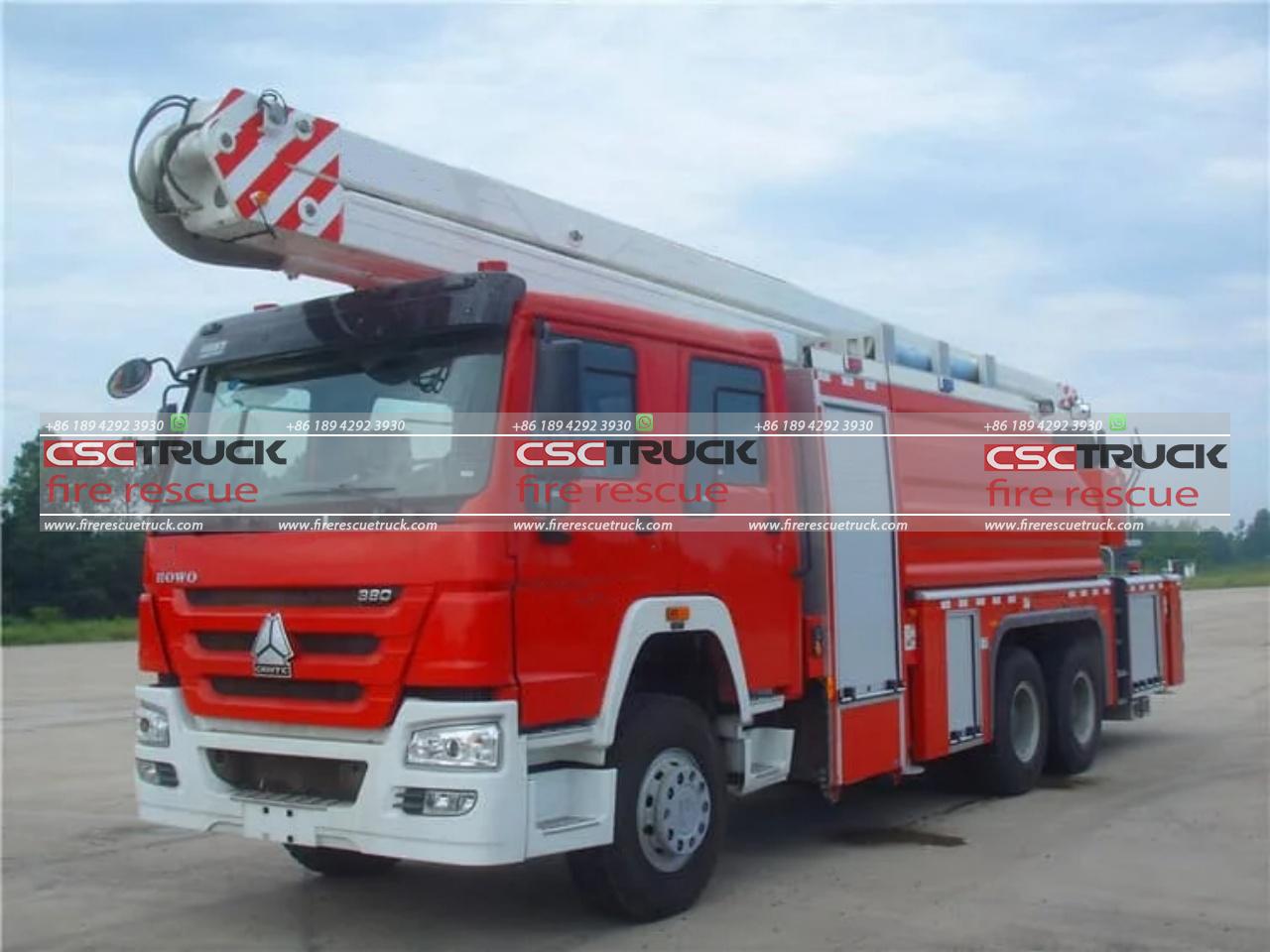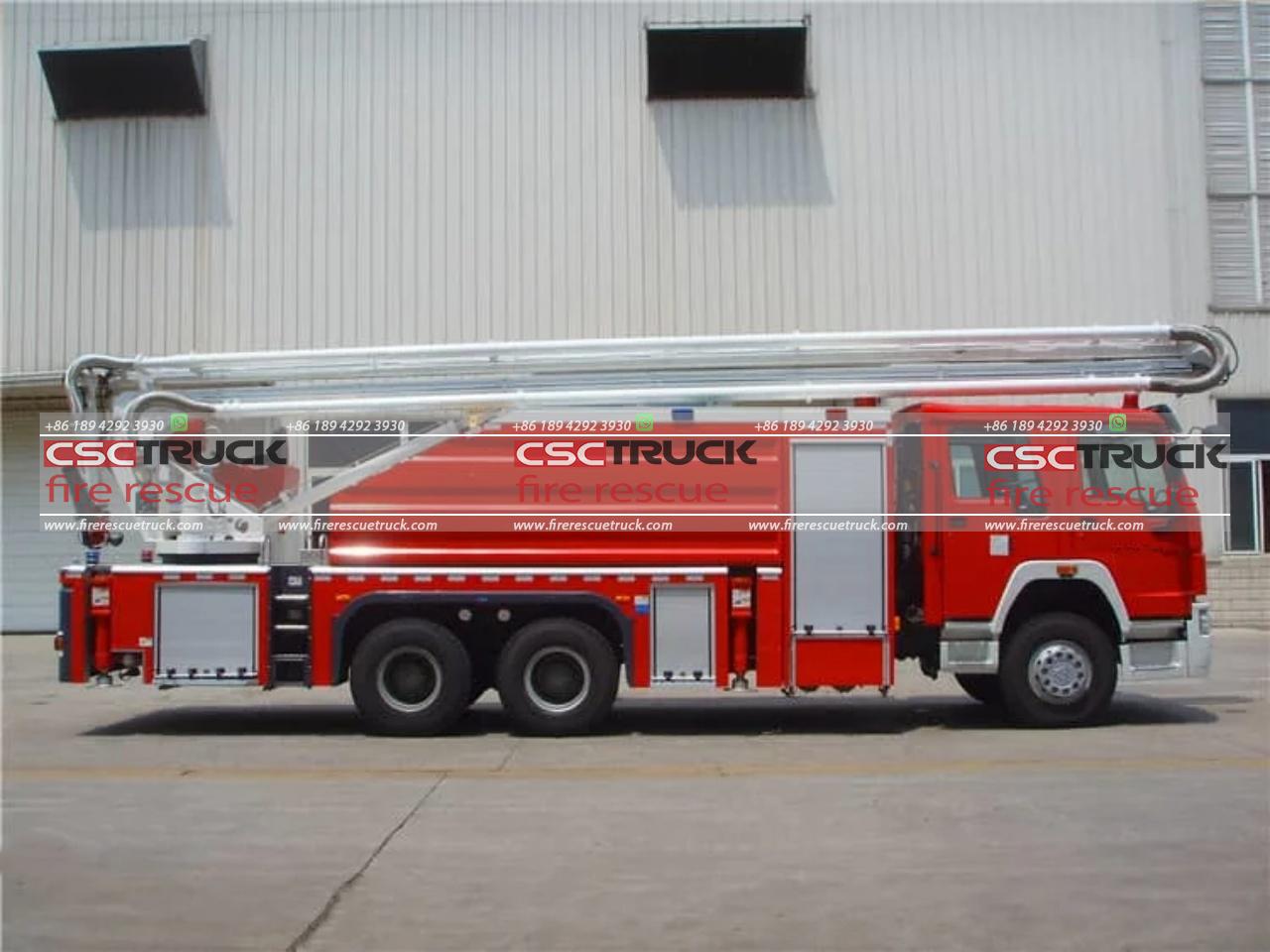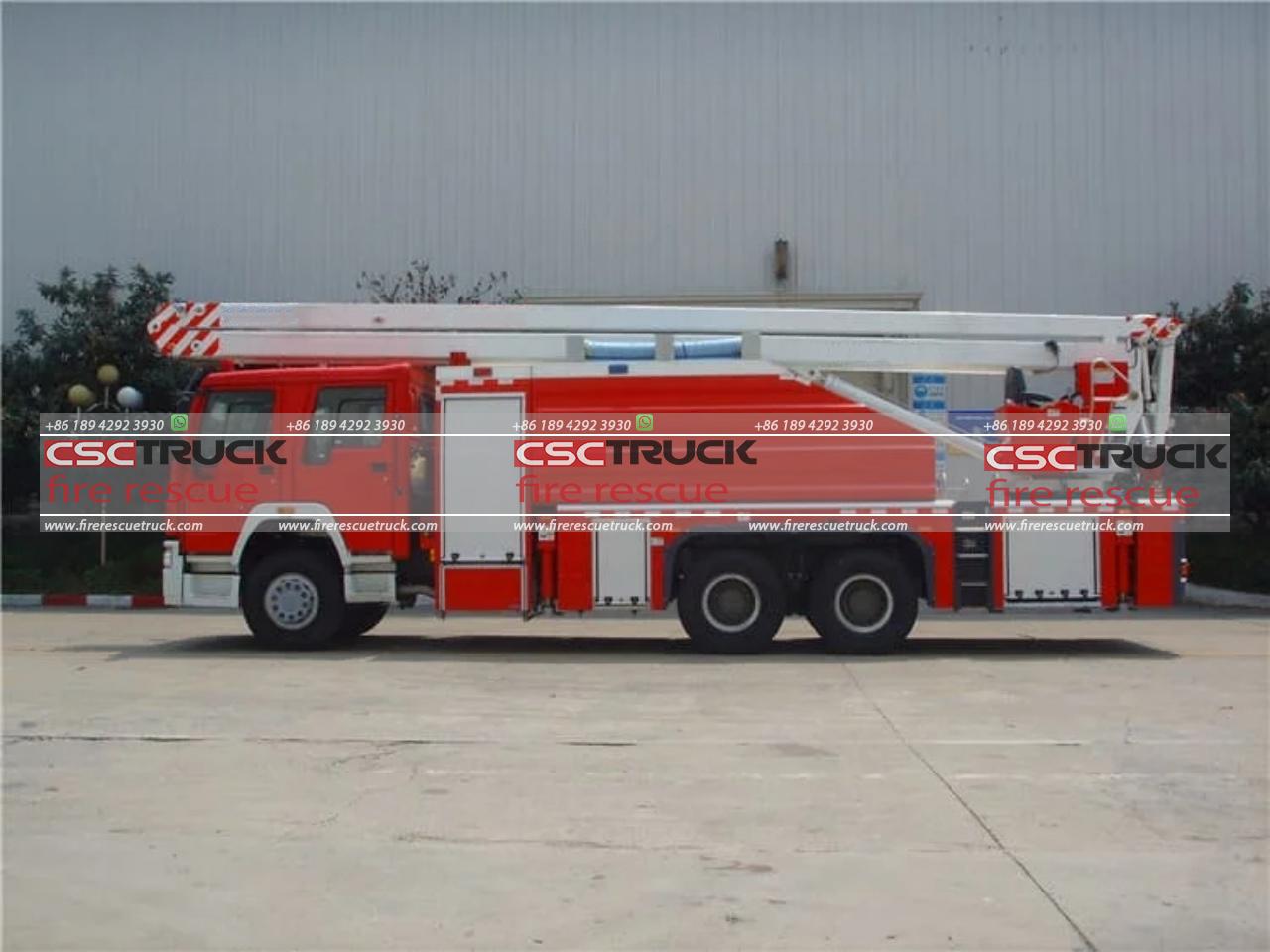What is a Telesquirt Fire Truck?
The term “Telesquirt” might sound unusual to those outside the firefighting community, but it refers to an essential piece of equipment in modern fire departments: the Telesquirt fire truck. A Telesquirt is a versatile fire apparatus that combines the functions of both a pumper and an aerial unit, making it highly effective for fighting fires in various scenarios, from residential and commercial buildings to industrial settings. By understanding its design, uses, and benefits, we can appreciate why Telesquirt has become a valuable asset for fire services worldwide.
Design and Features
A Telesquirt fire truck is essentially a pumper equipped with a hydraulically operated telescoping boom that has a nozzle attached to its end. This boom is commonly referred to as a “squirt.” The unique configuration enables it to serve dual purposes. First, it operates as a pumper, with the capability to draft water from a hydrant or static water source and then pump it at high pressure through hoses. Second, its telescoping boom provides the advantage of elevated water streams, which can be used to reach higher floors or gain access to otherwise difficult-to-reach areas.
The boom on a Telesquirt can vary in length, typically ranging from 50 to 75 feet. Though shorter than traditional aerial ladders, this boom offers a compact and maneuverable solution, especially in situations where space constraints or narrow streets might hinder the operation of larger ladder trucks. It also features a nozzle at its tip, which can be remotely controlled to adjust the spray pattern, flow rate, and direction of the water stream. The ability to deliver water from an elevated position makes the Telesquirt particularly effective in combating fires in multi-story buildings, roof fires, or large outdoor blazes.
Another defining characteristic of Telesquirt fire trucks is their ladder component. While the boom itself is not a full-sized aerial ladder, it typically includes a ladder section that provides limited access to elevated areas. This can be helpful for rescue operations or for firefighters to position themselves at a higher vantage point during firefighting operations. The ladder is often foldable and telescopic, allowing for easy storage when not in use.

The History and Evolution of the Telesquirt
The concept of the Telesquirt dates back to the mid-20th century. In 1958, the Fire Department of New York City (FDNY) recognized the need for a more versatile firefighting apparatus that could operate in the city’s congested streets. This led to the development of a prototype combining a pumper with a small articulating boom, resulting in the first Telesquirt.
Subsequent models refined the concept, adding telescoping features to extend the reach of the boom, thereby increasing the height and range capabilities. Early Telesquirt designs often included just a simple monitor nozzle, but modern versions incorporate sophisticated features like automatic nozzle control, electronic stabilization systems, and improved ladder designs.
The name “Telesquirt” itself became synonymous with the product line created by Snorkel, a company that specialized in aerial fire apparatus. Eventually, the Telesquirt concept was adopted and improved upon by other manufacturers such as Pierce, E-One, and Rosenbauer, each adding unique design enhancements. Today, the Telesquirt remains a popular choice for fire departments that require the flexibility and efficiency of a multi-purpose vehicle.
Primary Uses and Applications
The Telesquirt’s flexibility makes it ideal for a wide range of firefighting scenarios:
1. Urban Environments: In cities with narrow streets or limited access, the Telesquirt’s compact size and maneuverability allow it to navigate through congested areas more easily than traditional ladder trucks. Its relatively short boom makes it suitable for reaching rooftops or upper floors of buildings up to 6 or 7 stories tall.
2. Suburban and Rural Settings: In areas without the luxury of ample water supply, the Telesquirt’s pumper capability becomes essential. It can draw water from lakes, rivers, or portable water tanks, making it valuable for rural firefighting where hydrants are sparse.
3. Industrial Fires: The elevated stream of the Telesquirt can effectively suppress large industrial fires, particularly those that involve flammable liquids or hazardous materials. The remote-controlled nozzle reduces the risk to firefighters by allowing them to apply water or foam from a safer distance.
4. Rescue Operations: While the ladder on a Telesquirt is not as long as traditional aerial ladders, it can still be used for limited rescue operations. Firefighters can use it to access windows or roofs, assist in evacuating building occupants, or provide a staging point for deploying additional tools and equipment.
5. Specialized Scenarios: Some Telesquirt models are outfitted with special foam systems, making them suitable for aircraft rescue and firefighting (ARFF) at airports. Others are equipped with chemical extinguishing agents for use in combating chemical plant fires or other hazardous material incidents.

Advantages and Limitations
One of the primary advantages of the Telesquirt is its versatility. It can function as both a pumper and an aerial unit, reducing the need for separate apparatus in departments with limited budgets or personnel. This dual functionality can also result in a quicker response time since fewer units are needed at the scene.
Moreover, the Telesquirt’s compact size means it can operate in confined spaces that might be inaccessible to larger ladder trucks. Its boom can be quickly deployed and offers a stable platform for elevated water delivery. Additionally, its cost is generally lower than that of a traditional ladder truck or tower ladder, making it a cost-effective option for smaller fire departments.
However, the Telesquirt does have its limitations. The reach of its boom, while adequate for many scenarios, is shorter than that of full-sized aerial ladders, limiting its effectiveness for very tall structures or for providing extensive rescue capabilities. Additionally, the ladder section is more of an auxiliary feature rather than a primary tool, which means it is not suitable for extensive aerial operations.
Conclusion
In summary, a Telesquirt fire truck is a multi-functional apparatus that serves as a bridge between a pumper and an aerial unit. Its ability to deliver water from an elevated position, combined with its compact size and relatively low cost, makes it an ideal choice for many fire departments. While it may not replace the need for larger aerial trucks, its versatility ensures that it remains a valuable asset in any firefighting fleet. Whether operating in densely populated urban environments, suburban neighborhoods, or rural areas, the Telesquirt continues to prove its worth as a reliable and adaptable firefighting solution.








